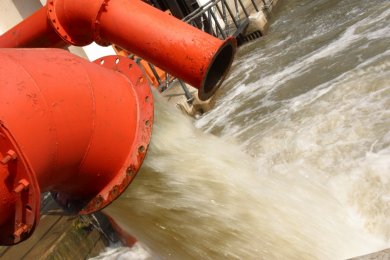A single compact device able to detect trace chlorinated hydrocarbons in water has been developed. Tetrachloroethylene and tricholoroethylene can be detected at concentrations as low as 75 µg/L with a monitoring duty cycle of 3 min.
The membrane-extraction ion mobility spectrometry (ME-IMS) device, designed by Jun Xu and co-workers at Oak Ridge National Laboratory, TN, USA, and Dalian Institute of Chemical Physics, Dalian, China, combines a spiral hollow poly(dimethylsiloxane) membrane tube and an ion mobility spectrometer. This creates a single procedure for in-situ monitoring of chlorinated hydrocarbons in water.
The time-dependent characteristics of sampling and detection allow for continuous monitoring of chlorinated hydrocarbons in groundwater. The sensor can also be configured to monitor well, tap or river water or other water sources suspected of contamination.
- Membrane-Extraction Ion Mobility Spectrometry for in Situ Detection of Chlorinated Hydrocarbons in Water
Y. Du, W. Zhang, W. Whitten, H. Li, D. Watson J. Xu,
Anal. Chem. 2010, Article ASAP, published online March 24, 2010




